Resources
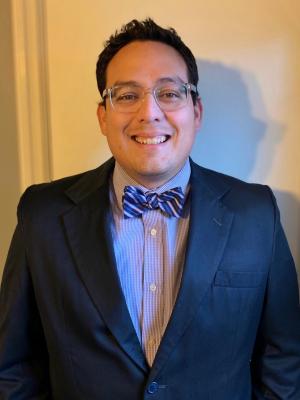
During my teaching experience in Zambia, music became an important part of the day-to-day life of my students’ coursework. When I first asked the students to share about things they valued from their own culture, one of the elements they mentioned was their love for music. As I was to later find out, this love of music did not refer to music theory or a song being played. Rather, it is a way of living out their culture and experiencing life through music. Music was everywhere in Zambia: in my students’ homes, in their schools, in their churches, and in their houses of worship, for example. Music was to be experienced and led to a form of embodiment, or at the very least recognizing that as human beings we are embodied in our everyday visceral reality. I also found myself making connections to my own Latinx ethnicity. For example, many individuals of Latinx heritage also share an African heritage. Several countries in Latin America have been marked by racial intermixing between Africans, Amerindians, and Europeans. There is even a growing field of study of the Afro-Latino experience. I recently did a DNA test and discovered that at least 10 percent of my DNA is African. It was surprising, but in my Latinx experience it was a heritage that was suppressed and ignored, although the cultural influence was undoubtedly there. I thought that perhaps engaging music would be a way to connect my own heritage to the experiences of these students in Zambia. And concomitantly, perhaps the use of music could lead to an embodied experience in the classroom where we could build bridges between our cultures, ethnicities, and races. I knew that I had to improvise in my lesson plans to accommodate this important cultural element in the classroom. I asked each student to prepare a song for one of our teaching sessions during our time together. Because I had 12 students, I asked some of them to pair up. I was specific and asked for songs that they sing for worship in their own country and that were relevant to the course content, but they had the freedom to choose the song. I encouraged them not to use digital sources, but to sing or play the songs in their own way. When the first student presented her song, her voice carried over the class. It was an old hymn that the students immediately recognized (I did not). The students all joined together in their singing. Their bodies swayed and some raised their hands. In this expression, their bodies were present, involved, and recognized. It brought to memory the book by Estrelda Alexander, Black Fire, where she traces the importance of African spirituality in Pentecostalism and describes the body-mind-spirit correspondence of their worship.[1] For my students, music was a corporeal and corporate experience. As an instructor who was present in this environment, I was stating by my mere presence, “Yes, you and I are different; but we can enjoy these musical arrangements together. We can share in this special moment. We are together in this class. We are on equal footing.” Music gave them a legitimacy to express themselves. In listening, I demonstrated that they were valued. Their contributions as authentic as they were to their context were not dismissed or looked down upon, or even looked over. Their voices mattered. Their culture mattered. Their skin tone mattered. I was deeply appreciative of the resourcefulness of my students despite having little or no resources. Music was one way that this resourcefulness played out. For example, the students sang together. Sometimes, it seemed they were singing two different melodies, yet their differences complemented each other. They would also use their hands to clap or use sticks to keep the beat and rhythm. I was amazed at how they all wanted to participate in this experience. If they didn’t know the lyrics, they hummed along. After the singing, the class seemed to come together. Not only were student’s minds engaged in the course content, but their bodies, attitudes, and culture were involved also. I concluded that music is a wonderful resource. It is able to change a person’s mood. It is able to create a certain ambiance or environment. It is also something that is shared if everyone is listening to the same thing. All the participants move to the music together. The classroom was not just a foreign Honduran-American telling students how to think or what to think. Rather, it created space for meaningful engagement. As I return to the US, I want to make music a part of my courses. Whether we sing old hymns or modern music, it is important to honor the cultures, ethnicities, and races of my students. This is one way to engage them. I know students may have reservations about singing, but at the very least they can bring a video clip to play in class through web services like YouTube. Whether it is online or in person, sharing in music is an activity that all can participate in [1] Estrelda Y. Alexander, Black Fire: One Hundred Years of African-American Pentecostalism (Downers Grove: IVP Academic, 2011).
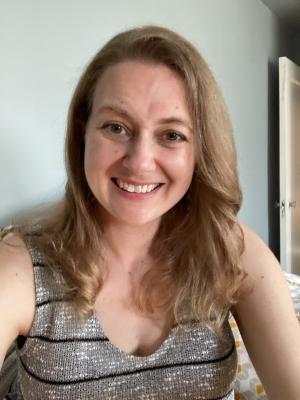
Proponents and practitioners of multisensory learning are experiencing a loss as it becomes clear that the shift to virtual and hi-flex learning has become a norm in many institutions, not the short-term solution it once seemed it would be. How can we learn in an embodied way when all we can see is sea of talking heads? How can we use all of our senses when half, if not all, of the class is on a screen? We experience grief at the loss of favorite lesson plans and the ability to observe the shifts that take place when learners engage with their whole bodies. The initial thrill that we could still at least do small group discussions using breakout rooms has long since worn off. When can we get back to embodied learning? In truth, we never stopped. The bodies have always been there behind the screens. We just have to find new ways to get materials into learners’ hands and trust that our entire bodies are learning even when we can’t share space with one another. I used to have an insuppressible grin on the days that I walked from my office to my classroom laden with Play Doh, markers, construction paper, and any number of materials my students associate more with Sunday School than graduate school. Although I can no longer count on the ability to spontaneously distribute craft materials, I can still make use of them so long as I plan sufficiently ahead. Unique materials can be sent in the mail and a good “care package” can contribute to building community at a distance. If I know (or highly suspect) I will be using easily acquired materials such as crayons in a course, they are now a part of my required “book list.” My first-year students are particularly surprised that they will need six colors of Play Doh for their introductory Bible course! I have discovered that in addition to making sure students can learn with their senses from any location, making sure that everyone has a similar collection of creative implements sets the tone for the learning community we are about to create. A playful tone is present from the outset without the need to wait for a particularly exciting lesson plan. Learners also experience viscerally the usefulness of having such materials at the ready. I used to be the one who always had chenille stems on hand; now we all do. With easy access to a variety of materials, students can create models and symbols to express what they are learning whether the entire class is in one group or doing small-group learning. Even without physical materials, shared control of the virtual whiteboard can allow a learning community to communicate collaboratively using multiple senses. The digital format does not limit us to expressing ourselves with words alone. We can color-code Pentateuchal traditions or create images for our understanding of theological concepts. Once everyone has multisensory materials available to them, the initiative for embodied learning can come from anyone in the community. When learners take the lead in designing course material or creating a learning activity, they can anticipate, like I do, that everyone will have the basic materials at the ready to learn with their senses. This provides the necessary support and encouragement for learners to become leaders in embodied education. They are freed to develop creative lesson plans for class presentations and leadership because they know that when they come up with an idea they can run with it. I have had keener student leaders think far enough ahead to mail supplemental materials to the entire class in their homes, while asynchronous learners video or photograph their results to share with one another for ongoing conversation. It is not just a relief—but a joy—that I haven’t lost the ability to play and use a variety of multisensory materials in the classroom when my classroom became partially or entirely virtual. It surprised me into giving learners more agency in including these necessary learning implements in their repertoire. The learning continues to be embodied, even if our bodies are physically distanced from one another.
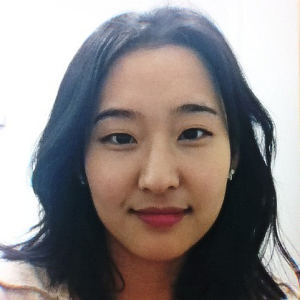
My daughter looks forward to her trip to Disneyland, which is scheduled for her twelfth birthday. She listens to the stories about the park from her friends, reads the descriptions on the website and magazines, and watches numerous ads on YouTube. One day I asked her (trying to save some money), “Honey, since you already know so much about Disneyland, do you really think we should go?” You can easily imagine her screaming reply: “No way! I should definitely go! It is totally different!” Teaching world religions for several years, one question that I try to better answer each time is: “How can I make each religion real and alive, so that students don’t see it as a concept to be memorized or something that exists in textbooks or histories, but as something that they can feel, touch, apply, and appreciate, in other words, something that they can ‘embody’?” I find this question especially important since many students have been trained to see religion as a series of beliefs and doctrines, rather than daily practices, bodily movements, and practical ways of dealing with specific challenges in life. There are several pedagogical methods I have been developing to enhance the embodied understanding of religions. There is much room for further refinement. One is providing opportunities for having sensory experiences of a religion. For example, during our sessions on Hinduism, as students come into the classroom, they will hear ancient Vedic hymns recited by Hindu priests. In another session, they would smell the fragrance from burning herbs and ghee commonly used in daily Hindu rituals. Yet in another session, they listen to George Harrison singing “My Sweet Lord,” which embodies Hindu piety and religious inclusivity with a beautiful melody and guitar sound. It is okay if students keep chatting with their friends, browse the internet, or review previous materials experiencing these things. The casual setting is intentional because I think there’s a significant value in building up familiarity with an unfamiliar religion in a relaxed setting without the pressure to comprehend or memorize information. I find these small exposures make it easier for students to open their minds and engage more intently in class discussions and lectures. During the class hour, I utilize multiple videos to help students observe the religious practices. In particular, I ask them to focus on the sounds, movements, facial expressions, and variegated bodies of practitioners whose voices are often muted in scriptures. For example, before discussing the concepts of the Hindu sacrificial ritual, I ask students to describe whatever they see in the video of an ordinary sacrifice, paying attention to every detail they’ve noticed. Students are often surprised to learn that their simple remarks are tied to important concepts such as puja, darshan(a), symbols and characteristics of gods, murti, and rituals. Another method that helps students experience a religion more intimately comes from hearing the voices and watching the movements of practitioners in person. For each religion, I reach out to students and colleagues who practice that religion or are coming from that background to talk about their religion. They share their personal stories, show us photos and objects, and tell us what they value most about their religion. These demonstrations add a visceral component for the students that deepens their understanding beyond the stock images we find in textbooks and the internet. Sometimes the guests also share thoughtful questions and criticisms, which adds nuance to our understanding of a religion and intensity to the class discussion. External observation of sensate practices, however, is not enough. If embodied empathy is the goal, beliefs should be experienced, too, so students can tap into the value that practitioners find in a particular religion. At the beginning of the course, I introduce the concept called “Religious Scholar’s Magic Hat.” It is a rather light form of practicing epochē and getting snippets of insiders’ appreciation of the religion. I ask students to wear this imaginary hat while we practice applying a religion’s core ideas to our daily lives. For example, after presenting an array of Buddhist teachings on suffering and freedom from it, I leave some time for a reflective task. First, students think about the things that create stress in their lives, including some of their most painful experiences. Then after writing down their answers, I ask them to think carefully about the potential causes of those sufferings, looking carefully into the deep desires that they have. After this, with the help of Thích Nhất Hạnh’s short guided meditation, we practice focusing on a single desire or emotion that rises in our minds, aiming to see its illusiveness. Throughout this mock Buddhist meditation, students can try embodying central Buddhist teachings, seeing the potential applicability of Buddhism to some of their problems. I believe that the conscious practice of embodying religion in class, despite its incompleteness and sometimes awkwardness, helps students extend their understanding of religions. Hopefully this training enables students, when they encounter a religion of others, can practice trained empathy rather than immediately distancing themselves based on doctrinal differences.
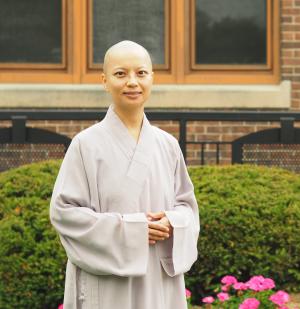
From a broader aspect, school closure during the outbreak of the Coronavirus pandemic created a crisis in the global history of education. But, personally, this crisis brought about opportunities, and the pros outweighed the cons. When classes moved online, the unexpected challenges of educational disruption inspired me—more precisely, forced me—to have a critical reflection on what exactly multimodal communication means in higher education. This unique moment also made me rethink how and why physical interactions play a critical role in the process of learning. These in-depth reflections have reshaped my teaching styles and pedagogical skills, especially in my Zen Buddhism course. The lack of physical interactions during the campus closure created more devastating impacts on my Zen Buddhism class than on my other courses. This intermediate-level class guides students to learn thoughts and practices related to mind cultivation in Buddhist meditation traditions in China, Japan, and the United States. I faced a challenging task: students mainly focused on pursuing “good grades” rather than connecting their learning to the real world. Without classroom engagement, students ended up memorizing knowledge rather than developing insights. This issue is worth seriously considering for instructors. I realized that providing students with opportunities for firsthand experience is more significant than teaching them theories described in textbooks or PowerPoint slides. When we returned to the normative classroom-based environment after the pandemic, I redesigned my course syllabus and included a tea ritual to boost students’ engagement. This change aims to stimulate cognitive abilities and develop a sense of self-awareness. Lesson Plan: Students are divided into five groups. Each group selects a “host” to make tea, and other members become the “guests” who experience mindful tea drinking. I explain the procedure of tea making and each student takes turns practicing the etiquette of a “host” who serves tea. Students are required to observe their physical and mental states during the entire process. After the tea ceremony, each group discusses why tea drinking is a type of mind cultivation and whether the ritual can evoke peace and awareness. The questions that students discuss include: How does tea drinking bring about sensory awareness of the whole person (smell, vision, taste, and feeling cold or warm)? Why and how does tea drinking denote a “healing journey” from a personal aspect? How is tea making as the subject of concentration be unique, when compared with mediation? How is tea drinking in the Zen tradition different from other types of drinking culture (for example, coffee)? During the discussion, I reduce my input to eliminate the “authoritative” voice and remind students that it’s their time to share their self-discovery, which is beyond right or wrong answers. Here is what I have learned from students’ feedback. Students rediscover their sense of awareness: While comparing tea drinking with meditation, most students respond that the concentration produced by meditation is too subtle to detect. But drinking a cup of tea can stimulate multiple sensations such as smell, taste, and physical feeling. Because tea is visible, touchable, and noticeable, students feel it is easier to bring their mind and body together. Students said that they are able to perceive the whole body as a learning tool. Through the integration of physical engagement in learning, students acknowledge that bringing body and mind together is the key to producing insights. Limitation of language: When students discuss and share their feelings, they find out that language has certain limitations and their sensations and states of mind are ineffable and beyond language. Some students struggle to find words to express their feelings. A student said that seeing the world through the lens of “ritual” is very distinct from that of “textbook.” All students agree that this activity diversifies their learning resources and supports other modes of learning such as reading or writing papers. Daily activities create opportunities for spiritual cultivation: This activity enables students to extend the tea-drinking experience to reflect on their other daily routines. Students report that a five-minute tea drinking is a doable and manageable daily opportunity for stress reduction. Students also mention that the quiet moment is a time of mental purification, and they hope to create more occasions to do so. A student suggests that the college should consider providing free tea ceremonies at quiet locations around campus to improve student self-awareness and relaxation during break time, especially the midterm and final exam week. This teaching experience is meaningful and rewarding because I see smiles on students’ faces.
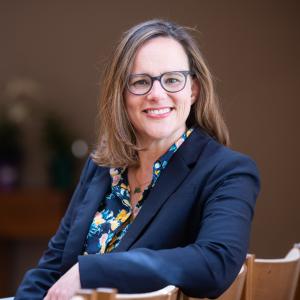
One of the cruel ironies of teaching in Atlanta is that the so-called fall semester always begins in the damp-flames-of-hell climate that is August in Georgia. But this morning, as I sit with my coffee on my back porch, I recognize the halting, modest signs that a proper fall may arrive after all, despite all evidence to the contrary. I see a few yellow leaves drifting to the grass from the weeping cherry tree. Likewise, I notice the tip top of the Japanese maple tree is hinting at its fall purple-red glory. The air, while still sticky, carries a whisper of crispness. I could sit here for a while, if I can just slow my mind and let my senses help me pay attention to the world. Embodiment should come easily to me. I am a practical theologian whose specialization is the relationship between theology, education, and ecology. This intersection can hardly be imagined absent a strong commitment to embodiment, to the ways in which we understand our bodies to inhabit particular places and relate to other bodies; to see, to breathe, to taste, to hear, and to touch. In honoring the body’s knowledge, we name its vulnerability, and the ways in which we are tied to the vulnerability of other bodies.[1] I have tried to counter false narratives that would suggest that a real academic somehow transcends her embodied self. I have developed practices to help ground me in my heart and body, and when I’m able to commit to these practices, everything else seems to flow: my research, my teaching, even those administrative tasks. Easier said than done, though. In our institutions of higher education, serious inquiry has been conflated with dispassionate objectivity, learning with the cognitive work of recalling and interpreting.[2] We might even struggle to recognize the needs and honor the knowledge of our own bodies, as individual scholars and human beings.[3] Speaking for myself, I might spend hours crouching at my computer, loathe to break my supposed focus. With high hopes, I might have scheduled a workout or a walk with the dogs for later in the afternoon, only to abandon those plans when it seems I do not have time. I might eat breakfast and lunch at my desk. Now, after two years of remote work and learning, I think the question of embodiment is insisting itself to us in new and powerful ways. I think we begin to find our way toward an answer by first looking within. How do you begin your day? Environmental education scholar Mitchell Thomashow writes, “Consider two different ways of greeting the day. You can step outdoors wherever you may be in order to feel the temperature, wind conditions, light, sounds, and smells, or whatever visceral impressions fill your senses. Or you can immediately glance at your phone to check your messages, email, or whatever virtual information gets you oriented.”[4] On good days, I might begin the workday at my writing desk at home, which faces out a window, and quietly work on research and writing projects for an hour before the rest of the family awakens. Sometimes I might check in online with some colleagues who also arise early to write before turning to our other daily tasks. It’s a tiny act of resistance to the culture of accelerated and sometimes frenetic work demanded by the pressures facing so many of our institutions.[5] But more often than I would like to admit, I start my day by checking my institutional email on my smart phone before my feet even hit the floor. It’s a seemingly small thing, but the net result is that, from the start, my mind is in a reactive state. I respond to every demand, every email, every knock on my door, with little sense of purpose or vision. I end the day exhausted, my eyes and shoulders strained, with seemingly little satisfaction to show for it. This way of being is not sustainable, of course. And as orientation approached this fall, I was confronted in a new and urgent way with the limitations of approaching my work without mental and emotional intentionality. Even deeper, I was confronted with the poverty of the life of the mind absent a steady, trusting, and grounding practice that honors my own body’s knowledge. Thanks to a benign but persistent virus that took up residence in my inner ear in August, I found myself unable to be in crowded spaces, to process complex visual or aural stimulation, to look at my computer screen, or even read without becoming very dizzy. I would clench my jaw and “power through” whatever task was before me, practically racing back to my office to close my eyes—no fluorescents, please!—or rest my head on my desk until the next thing. I barely got my syllabus revised and was grateful for a colleague who volunteered to build my course website for me. To my surprise, though, I could work in the yard, walk the dogs, and even do yoga with little difficulty. The body that found itself queasy and unsteady after just twenty minutes of looking at my computer screen was calmed and centered by these practices that grounded me in sensory experience, slowed my mind, and allowed room to reflect, think, and be present. Embodied practices that I once had perhaps too eagerly broadcast as a countercultural “choice” became a necessity and a source of salvation. As I write this, episodes of dizziness and disorientation are, happily and as expected, becoming less frequent and less severe. Yet I am clinging to a reordered pattern for the morning, landing me here, on my porch, greeting the day with all of my senses, watching the leaves turn and listening to a chorus of birds and bugs. There is so much to do, it’s true. But might you also find a place to pay attention to the world, and your body’s place in it? A place where you could sit, just for a while? [1] Judith Butler, Precarious Life: The Powers of Mourning and Violence (New York: Verso Books, 2004), 26-27. [2] Furthermore, the ways in which learning is structured in so many of our institutions reveal a disembodied “implicit curriculum” observable in how our classrooms are arranged, the kinds of assignments we make, and the reduction of embodied exercises and classroom breaks to reluctant “accommodations” we make so that the mind can continue the work of learning, unencumbered by the inconvenient needs of the human body. See Elliot W. Eisner, The Educational Imagination: On the Design and Evaluation of School Programs (New York: Macmillan, 1979), 97. [3] It is, of course, important to acknowledge that “embodiment” has historically carried additional risks for too many scholars and students in institutions with unexamined racist, sexist, and heteronormative assumptions. See, for example, Carol B. Duncan, “Visible/Invisible: Teaching Popular Culture and the Vulgar Body in Black Religious Studies,” in Being Black, Teaching Black: Politics and Pedagogy in Religious Studies, edited by Nancy Lynne Westfield (Nashville: Abingdon Press, 2008), 3-15. [4] Mitchell Thomashow, To Know the World: A New Vision for Environmental Learning (Cambridge: The MIT Press, 2020), 75. [5] Maggie Berg and Barbara K. Seeber, “Introduction,” in The Slow Professor: Challenging the Culture of Speed in the Academy (Toronto: University of Toronto Press, 2016), 1-15.